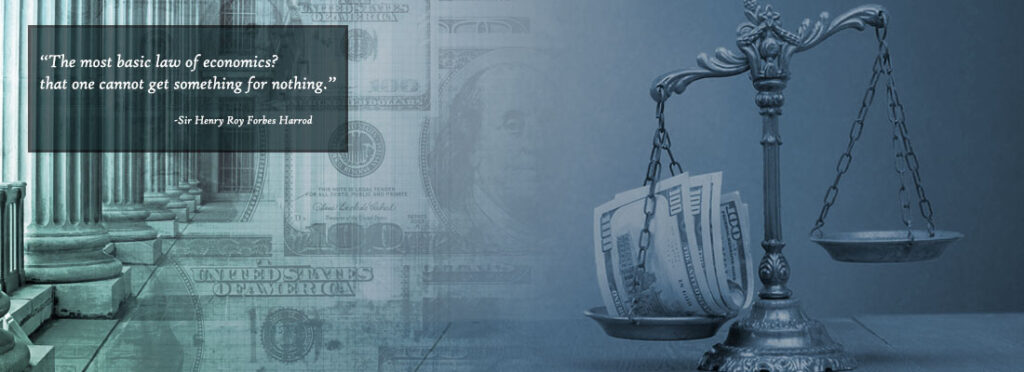“Law and economics,” also known as the economic analysis of law, differs from other forms of legal analysis in two main ways. First, the theoretical analysis focuses on efficiency. In simple terms, a legal situation is said to be efficient if a right is given to the party who would be willing to pay the most for it. There are two distinct theories of legal efficiency, and law and economics scholars support arguments based on both.
The positive theory of legal efficiency states that the common law (judge-made law, the main body of law in England and its former colonies, including the United States) is efficient, while the normative theory is that the law should be efficient. It is important that the two theories remain separate. Most economists accept both.
Law and economics stresses that markets are more efficient than courts. When possible, the legal system, according to the positive theory, will force a transaction into the market. When this is impossible, the legal system attempts to “mimic a market” and guess at what the parties would have desired if markets had been feasible.
The second characteristic of law and economics is its emphasis on incentives and people’s responses to these incentives. For example, the purpose of damage payments in accident (tort) law is not to compensate injured parties, but rather to provide an incentive for potential injurers to take efficient (cost-justified) precautions to avoid causing the accident.
Law and economics shares with other branches of economics the assumption that individuals are rational and respond to incentives. When penalties for an action increase, people will undertake less of that action. Law and economics are more likely than other branches of legal analysis to use empirical or statistical methods to measure these responses to incentives.



